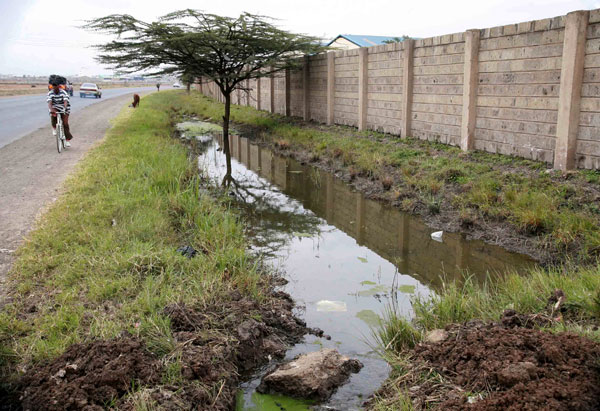By Joyce Chimbi
NAIROBI, Kenya—When I was seven years old, one of my family chores was to walk down to the river, half a mile from our home, and bring back jugs of water for drinking, cooking and bathing. In my town of Kiambu, a 45-minute drive from Nairobi, the capital of Kenya, no one had running water.
Nearly 20 years later, many people in Kenya and in other developing countries of the world, still do not have running water. The number of people around the world without consistent access to clean water is staggering. Hard to believe, really: nearly 1 billion is the number. Governments and private aid groups have spent hundreds of millions of dollars since I was a child to reduce the number of people in need of clean water for drinking and cooking and washing. Yet little progress has been made. Those who would do good seem to be marching in place. Each year they get more water to more people. But each year more children are born. And the number of people in need of clean water remains huge.
A lot of people in Kenya and other countries have moved into cities as I have. I’ve become a reporter and writer for African Woman and Child Feature Service and I live in an apartment in Nairobi, the capital of Kenya. I have a tap in my apartment connected to municipal water lines. Much of the year I have water right at my kitchen sink. Some months though there is no tap water for me and to be on the safe side I always boil my water before drinking it. I noticed that in London and Paris and New York, people drink straight from the tap. They don’t have to boil their water to make it safe. In much of the world it is not like that.
The crowding of people from the countryside into Nairobi over the last few decades has created new water problems. In some neighborhoods there are far more people than the city’s waterlines can serve. In those places people often go for days without running water. That means they usually have to buy water from street vendors. And the cost is very high.
In Nairobi as in cities throughout the developing world, entirely new neighborhoods have been created. One consequences of all the construction and the making of paved roads and sidewalks and parking lots is that the rainwater that my grandmother and I used to catch to see us through dry spells is simply lost.
Even though conservation groups encourage people in cities to catch rainwater and save it in cisterns, few people do it. Most of the new apartment buildings don’t have the kind of gutters that my grandmother had on her house and that we could angle into buckets and tanks. Water streams down the sides of the new apartment buildings and simply flushes over the pavement. No one even tries to catch the rain.
With all the paving, the water doesn’t soak into the ground as it used to. It does not replenish underground water pools or aquifers and refresh the rivers. Pools of dirty water collect on nearly every, flat, open patch of pavement. Sometimes the bacteria that causes cholera accumulates in the pools. Sometimes malaria mosquitoes breed in the water. Sometimes there are flash floods.
Eventually much of the water rushes into ditches and eventually into rivers. The runoff carries with it all kinds of human and animal waste and fertilizer, pesticides, gasoline and oil, contaminating water that people along the river will eventually drink, water that will eventually make some people sick.
In my Nairobi today, water shortages are a good thing for a few people. The beneficiaries are small business people with tanks of water and wooden carts that one or two men pull through the streets. They sell their water at a big profit. But their customers have no alternatives.
The prices may be high, but the water vending business in Nairobi is backbreaking. On rainy days, the water venders splash through mud and stagnant water in the new neighborhoods. The carts, which can carry up to 200 liters or about 50 gallons of water, are made of rough wood. The cart driver, relying on his own muscles, yokes himself to a crossbar that juts out in front of the cart creating a look of something like a rickshaw wagon. Often a hired hand pushes the cart from behind. The weathered, unpainted carts often have inspirational messages inscribed on them in red or black paint.
When I was growing up the seasons and the rains were fairly predictable. These days, with global warming, the seasons are uneven. It might rain, it might not. Growing up in rural Kenya years ago, I thought we had a tough time meeting our water needs. It’s a little better for me personally now in my apartment in Nairobi. But for lots of people, getting the water they need every day is still a difficult proposition. #

